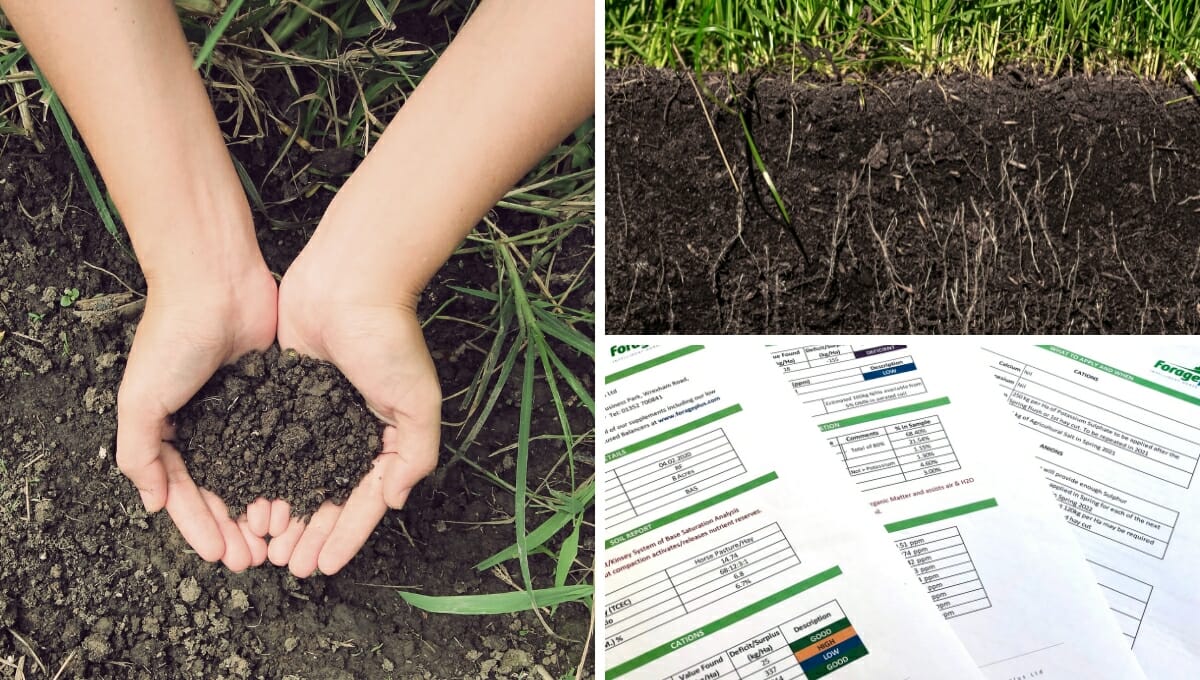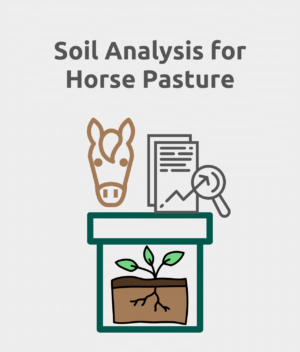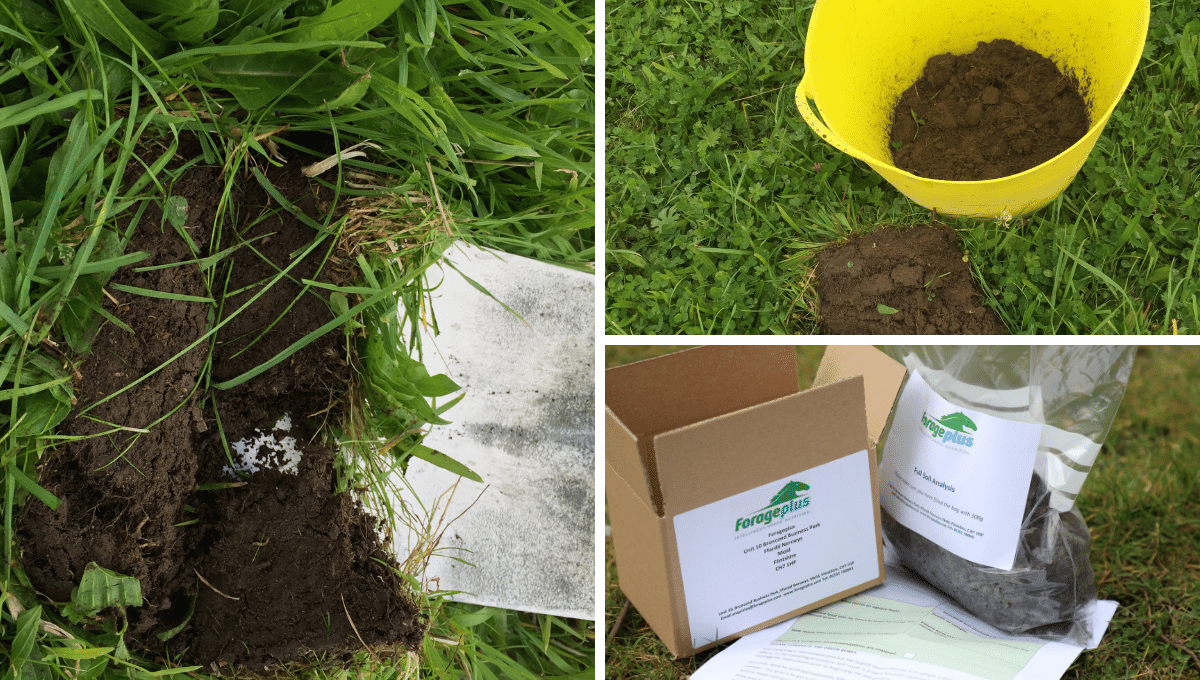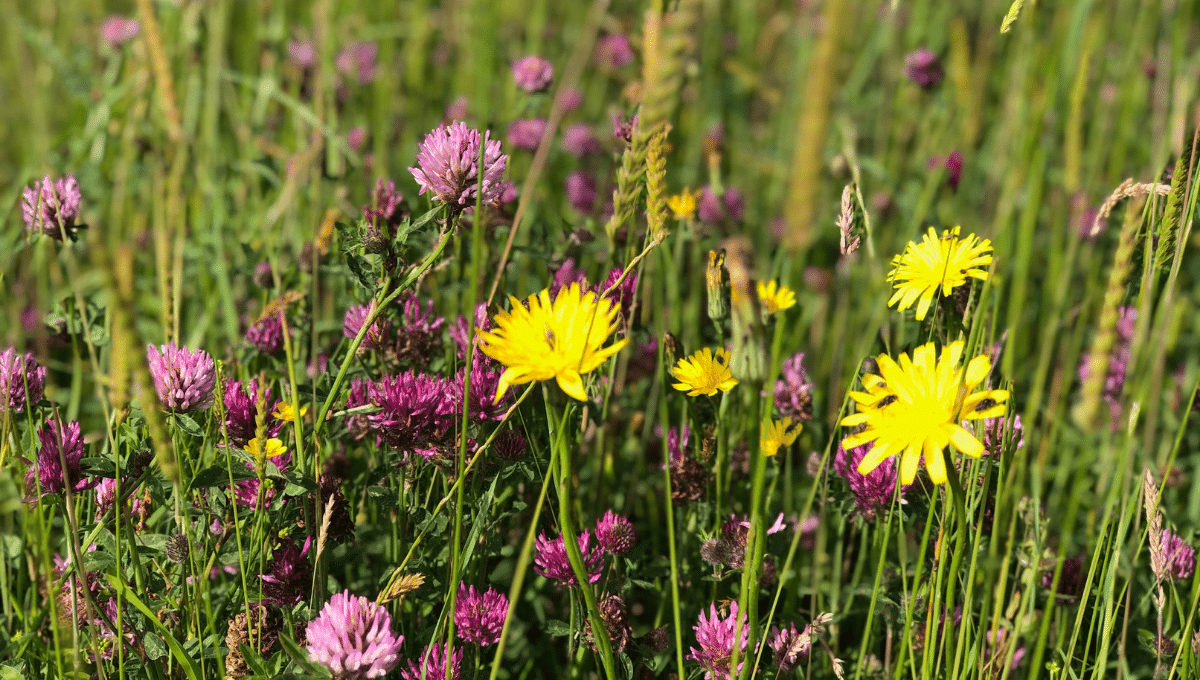You own a horse, you own or rent your land, but how do you test horse pasture soil using scientific analysis and why would you want to improve the soil for horses?
Why do you need to test horse pasture soil?
A delicate balance exists between the balance of minerals in the soil, the balance of the micro-organisms and other animals that live in the soil and the roots which grow the grass your horse eats. It is extremely important to understand that when soil is not looked after, not nurtured, not tended and not fed what it needs, the environment where your horse eats becomes sick.
When the soil is sick, the microbes and animals feeding upon the land become sick. When this delicate, but huge community balance is upset this is when the roots of the plants cannot get what they need. Then the balance of nutrients within the leaves of the grass your horse eats becomes affected.
What is healthy soil and how does it affect horses?
What is important to understand is that if you pick up a handful of soil there are more living organisms in that one handful than there are humans on the planet. In that one handful, there are millions of forms of life many of whom we do not even have names for. So rather than see the soil your horses walk upon as just a medium for anchoring plants, see it as the very life, the very health, the very reason your horse can and will be healthy.
Soil needs looking after, it needs tending and the way to do this is to feed it and the huge community of organisms that lives in it what they need.
Each soil in each field will be different. This is because the way the land has been used and cared for affects soil health. Geography too affects soil type and quality but it is not just about geography. Determining exactly what levels of all the important minerals are needed for your soil based on testing the state of your soil is crucial.
How does healthy soil create healthy horses?
Healthy soil supports the right micro-organisms to support the right growth of healthy grass. Healthy grass means healthy horses who will get the right amount of minerals, the right amount of protein and the right amount of sugar and starch. They will also eat grass which produces better phytonutrients and these phytonutrients foster glowing, resilient health.
How does unhealthy soil affect horse health?
Unhealthy soil will support the wrong micro-organisms which will affect the health of the grass. Unhealthy grass means unhealthy horses who will not get the right amount of minerals, not get the right amount of quality protein and be exposed to stressed grass high in sugar and starch. Grass that is unhealthy and stressed will not produce a range of phytonutrients to support and maintain a healthy animal.
Most horse pasture is compacted and sick due to the removal of droppings and lack of applications to balance the mineral profile of the soil. It is important to understand that only healthy soil will grow healthy grass and that a complicated relationship exists between the health of soil micro-organisms and the health of the plants grown upon the soil. Soil is much more than just an anchorage point for plants and when it is sick this will have an impact upon animals grazing upon grass-grown upon such land.
Horse land management techniques such as tracks and strip grazing will contribute to the compaction of the soil. Poaching soil in the winter will affect the drainage and the ability of the soil organisms to thrive. Where land is compacted in summer and poached in winter then the grass which grows upon it is likely to be higher in sugar and starch and minerals such as iron and manganese.
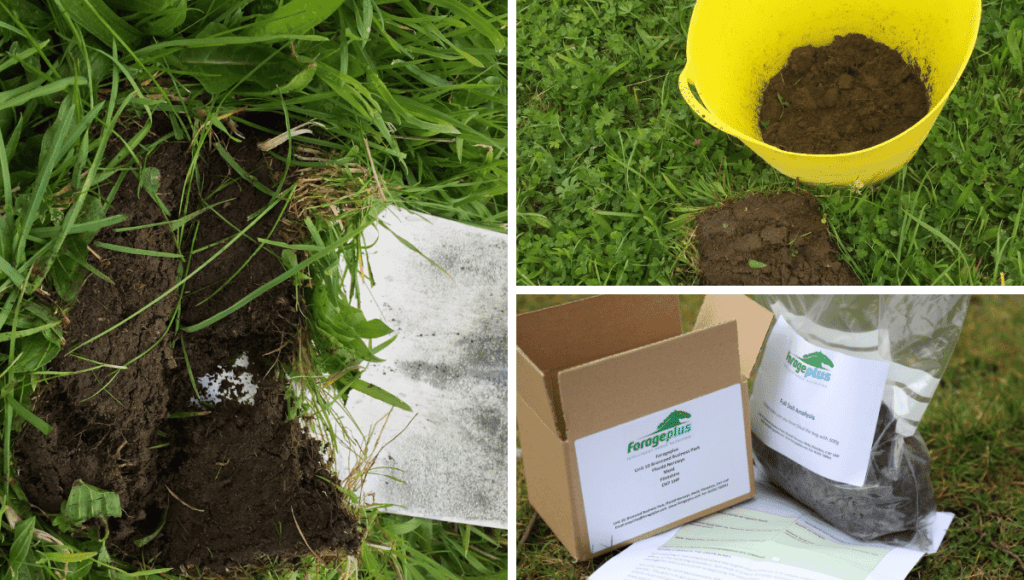
When to test horse pasture soil
If you own your land or you will be renting a horse field for several years then this is when you can change the health of the soil and change the health of the grass.
A soil test will tell you what your soil needs to be healthy and grow healthy grass for your horse to eat. You should carry out a soil analysis if you want to know what to apply to your land to improve the health of your grass.
A soil test cannot tell you what to feed your horse, what vitamins and minerals your horse needs or the levels of other nutrients like sugar, starch or protein. A soil test looks at the health of your soil.
Correctly fueling your horse is essential for resilient health, soundness and longevity. A car, when it breaks, needs new parts which are easy to replace. A horse constantly needs to repair, replace and in the case of performance horses and young horses, build their bodies. A car uses petrol or diesel as fuel your horse uses the nutrition in healthy grass. Healthy grass can only be grown on healthy soil.
If you keep your horse on a livery yard then a test of horse pasture soil will not be something to choose as you need to be able to put applications on the land to balance the mineral content of the soil.
You can test horse pasture soil at any time of the year. Testing in late winter or early spring will enable you to order the applications of minerals for spreading in spring. Testing soil in late spring, early summer will allow you to order the applications of minerals for spreading in late summer, early autumn.
Usually spreading mineral applications to improve soil is difficult once the late autumn and winter rains arrive as machinery will get stuck or churn up the land.
When do I need a forage test of horse hay and grass rather than a soil test?
A forage test will tell you what your horse needs to maintain and support good health. You should carry out forage analysis of grass, hay or haylage if you want to know what to feed your horse to achieve optimum health starting with the forage your horse eats.
A test of hay, haylage or grass can tell you what to feed your horse. These tests can tell you exactly what vitamins and minerals your horse needs or whether the levels of other nutrients like sugar, starch or protein are suitable for your horse. Forage testing will allow you to optimise your horse’s diet and specifically supplement only the nutrients your horse needs to complement the grass, hay or haylage eaten.
How to test horse pasture soil
The Forageplus soil test looks at the balance of minerals in the soil and is particularly suited to improving pasture specifically for horses. The test we recommend is not carried out by conventional agronomists but is extremely successful in looking at individual pastures and optimising the soil for the healthy growth of grass suitable for horses.
There are different ways to test the soil. It is important to choose the right method for horses so that the soil supports the growth of low sugar, good protein grass with a balanced mineral profile.
Using an RB209 soil testing method
The conventional way to test horse pasture soil uses a testing method and values from RB209, which is a document produced by DEFRA. Here at Forageplus, we have not found conventional soil sampling practice nor the one size fits all system of fertiliser application to be effective for testing and improving soil for horse pasture.
The conventional methods did not tackle reducing the very high levels of the mineral manganese on our land. Protein quality in the forage we made was so affected, when we used conventional methods, that the horses developed poor muscling and hoof cracks. The reason for this is that conventional methods give minerals an index reading, depending upon quantities found in a sample.
The index numbers are based on a weak plant root (rather than a healthy one) and its nutrient needs from soil water. So right from the beginning, this approach takes its figures from an unhealthy situation and one that completely ignores the impact of the soil micro-biome on plant health. The unhealthy situation is used as a benchmark purely because that is the norm for plants grown under conventional systems.
The index is simplified further by being linked to quite a wide range of readings for each mineral, you can see these index ratings below.
| Index | Phosphorous (P) | Phosphorous (P) | Potassium (K) | Magnesium (Mg) |
|---|---|---|---|---|
| Grassland | Tillage Crop | All Crops | All Crops | |
| 1 | 0 - 3.0 | 0 - 3.0 | 0 - 50 | 0 - 25 |
| 2 | 3.1 - 5.0 | 3.1 - 6.0 | 51 - 100 | 26 - 50 |
| 3 | 5.1 - 8.0 | 6.1 - 10.0 | 101 - 150 | 51 - 100 |
| 4 | > 8.0 | > 10.0 | > 150 | > 100 |
| Soil Index System Index 3 is the target index for soil P, K and Mg (Morgan's soil test) |
||||
The RB209 system then devises how much of the three major minerals should be applied in a complex manipulation depending on winter rainfall and residual nitrogen in the soil, how much farmyard manure was spread and what crop is to be grown. It is in no way looking at horse pasture which, typically for horses, is highly compacted and very compromised by overgrazing. It is also not looking at what is in the soil versus what needs to be the optimum to result in the healthiest of soil micro-organisms.
The conventional system is very much one that starts and finishes with the vested commercial interest of the bodies producing fertilisers. The end game is in creating a fast-growing, lush crop, which is weak due to the speed of growth. This weak crop is susceptible to attack from fungus, pests and bacteria. That is why so much spraying is needed in today’s modern farming. The soil is seen merely as a vessel to provide a physical rooting facility, support and little else.
Using an Albrecht/Kinsey method to test horse pasture soil
The Albrecht/Kinsey soil test method, which Forageplus prefers, is much more precise and is excellent for testing soil for horse pasture. This method starts from the optimum soil health so that the plants grown in it can express their full potential. It is based on looking at a healthy plant with healthy roots. The soil is seen as a living organism that needs a correctly balanced environment to function to its optimum.
Balancing the major minerals is seen as the first and most important consideration and this is calculated from Professor Albrecht’s work. The balancing looks at the holding capacity of each soil. This number will be missing from the indexing system described above.
Without the holding capacity information, you do not know the potential of your soil. To make this clearer just see your soil as a battery. Different sized batteries require different amounts of charging to give them optimum power.
The holding capacity of your soil indicates how big a battery it has. Some soils are like small batteries, others are like large batteries. Soils with small batteries (a smallholding capacity) will need small amounts of minerals to maximise their potential. Equally, soils with large batteries (a large holding capacity) will need a large amount of minerals to support optimum balance for the best growing environment.
Knowing the maximum holding capacity of each of the minerals needed for optimum soil health enables you to optimise the potential of your soil and provide the right environment and the right conditions for the best and healthy growth of grass for your horse.
Fertile soils will have more mineral holding capacity than unfertile so the conventional RB209 approach falls straight away at the first hurdle. Where you have poorer soil then the correct strategy is to apply certain minerals a little and often to maximise both yield and nutritional value of the crop grown.
Getting the correct ratio of minerals in the soil in horse pasture
The conventional way to test horse pasture soil also places no importance on the correct ratios between minerals which will be different depending on the type of soil. Getting the ratio right for the individual soil influences both workability and texture, this, in turn, influences whether your land gets waterlogged or drains well. Incorrect mineral ratios along with compaction is a massive problem for horse owners.
Typically land which is compacted will produce grass that is high in iron and or manganese and these two antagonist minerals will block the uptake of other minerals which are commonly deficient in horse’s diets creating both frank and relative deficiencies.
Getting the pH of soil for horse pasture correct
The other problem with conventional soil reports for horses is the way the emphasis on lime correcting pH level is used to exclusion. Magnesium has an influence 1.6 times that of calcium and pH but is generally ignored when balancing soil nutrients. Yet if you get the balance of the major minerals correct, using Albrechtian proportions, one finds the pH automatically corrects to the optimum 6.5. Calcium and magnesium, the primary minerals to be balanced, will greatly influence this factor. Potassium and sodium will also influence pH.
What are the benefits of the correct soil test?
There are not many agronomists or laboratory facilities practising this type of soil reporting in the world and even less using this effective method of testing soil for horse pasture. Getting the balance of minerals in the soil correct and improving the health of the grass will affect the positive health of the horse.
Get the applications to your soil right and based on plant root health rather than starting from a position of weakness then you will get optimum, healthy nutritious grass growth. This healthy nutritious grass will transfer to the animal but you have to start with a healthy soil balance first. This, in our opinion, cannot be done with the conventional soil report approach.
How do I use Forageplus to test horse pasture soil?
Testing horse pasture soil is easy with Forageplus. Follow these steps:
- Order a Forageplus Albrecht/Kinsey analysis to test horse pasture soil
- Wait for us to send you the kit and full instructions on take a representative sample
- Take your representative sample
- Send the sample back to Forageplus in the post
- Wait for your comprehensive report to be sent back via email, or never lose and view the report in your account area in the download section (for this you will need to create an account on the website)
- Follow the Forageplus application suggestions and rates, order what you need from your local agricultural farm supply and apply

Analysis Services
Forageplus provides a range of analysis services for horse hay, haylage, grass, soil and water. We can tell you if your forage is suitable for a laminitic, if there is a need for soaking, if there is sufficient protein or if there are any antagonist minerals or mineral deficiencies. Read more below.

